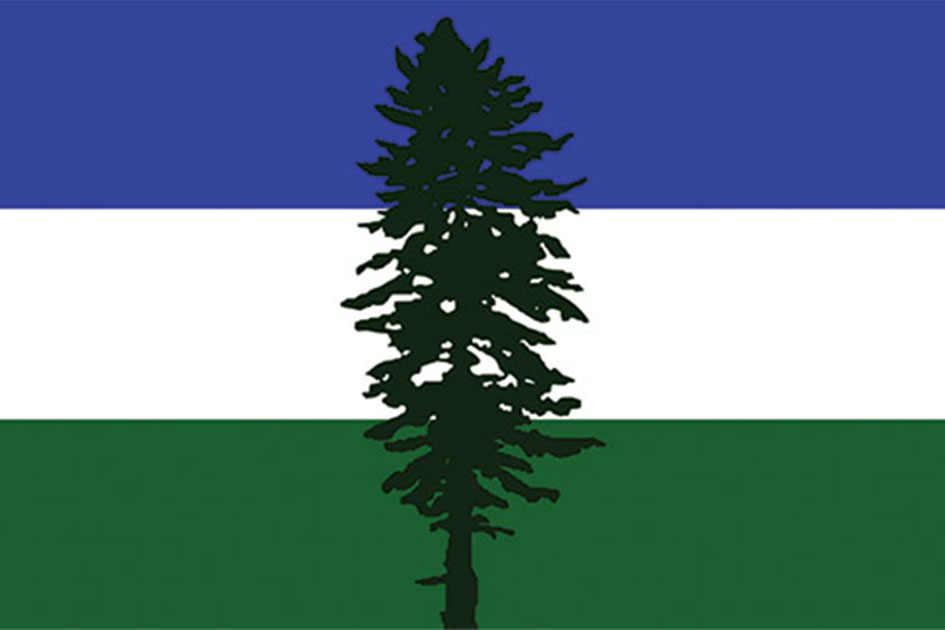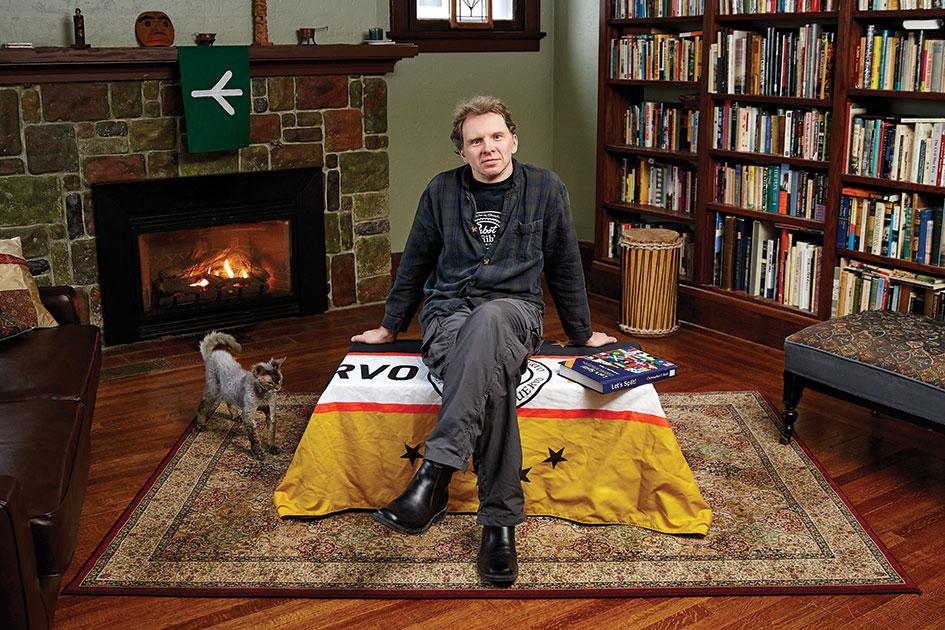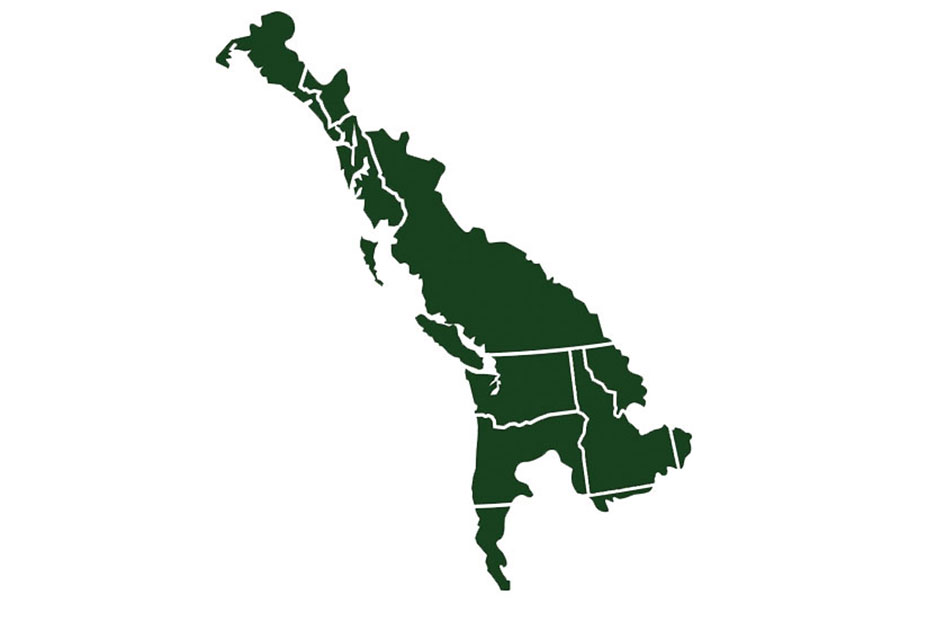Borderline Geography
Chris Roth ’90 surveys the surreal territory of imaginary nations, microstates, and separatist movements.
On a recent Fourth of July weekend, while most Americans were celebrating the Declaration of Independence with a backyard barbecue, Chris Roth ’90 chose to attend a conference in the Free Republic of Alcatraz, hobnobbing with heads of state such as Queen Carolyn of Ladonia; Niels Vermeersch, the Grand Duke of Flandrensis; and a couple of French crown princes in full regalia. Roth asked whether any of them maintained diplomatic relations with the Independent Kingdom of Talossa. “I won’t deal with those people,” he was told. “They are hostile and nasty.”
In case you can’t quite place these countries: the Republic of Alcatraz is a 500-acre parcel near Perugia in Central Italy. Ladonia is located somewhere off the southwest coast of Sweden. Flandrensis claims a group of uninhabited islands in West Antarctica. Talossa is headquartered in Milwaukee, Wisconsin, where Roth lives with his wife and three children. They are all “micronations” and most of them exist primarily in the minds of their mildly eccentric founders.
The conference, on the other hand, was entirely real. It was the Third International Conference on Micronations, and Roth had been invited to share his expertise on aspiring nations. Roth’s three years of immersion in global geopolitics have culminated in an almanac like no other. His massive, lively, and completely irresistible book Let’s Split! A Complete Guide to Separatist Movements and Aspirant Nations, from Abkhazia to Zanzibar surveys virtually every aspiring country in the world today.
Roth’s first intellectual love was anthropology. At Reed, he worked as a student researcher for his mentor Prof. David French ’39 [anthro 1947–88] and graduated with a degree in cultural anthropology and linguistics (thesis topic: “Verbal Aspect in Black English”). He earned his PhD at the University of Chicago and published an ethnography in 2008 titled Becoming Tsimshian: The Social Life of Names. But he wanted to broaden his scope.
“One of the reasons I wrote Let’s Split was that it was a book that I wanted to read,” says Roth, who may well be the premier practitioner of a discipline he has tentatively dubbed “schismo-geopolitics.”
An informal Reed network helped him find a publisher. Eve Müller ’89 put Roth in touch with another former classmate, Rory Litwin ’89, who attended Reed for two years and later went into library science before starting his own publishing house.
Despite its often light-hearted tone, Let’s Split serves as an insightful primer for anyone who has ever despaired of sorting out the players in the world’s deadliest conflicts, from the powder keg of Kashmir, wedged between Pakistan, India, and China, to the seething sectarian nightmare that has driven millions of refugees out of Syria. (Cruelly, around 10,000 of those refugees have applied for passports from the imaginary nation of Liberland, a libertarian redoubt sandwiched between Serbia and Croatia, which is in no way equipped to welcome desperate, fleeing families. For details, see Roth’s blog, Springtime of Nations.)
The book also includes entries on longshot separatist claims, such as the movement for an independent Cornwall—the feisty British duchy that was absorbed into England around the time of Edward the Confessor (and has been muttering about autonomy ever since.)
Before the internet, Roth says, he could never have undertaken a project of this scope. In addition to thousands of news sources (he scans hundreds of Google email alerts each week), the web offers instant access to highly accurate satellite data via Google Earth, a mainstay of current cartography. Google Translate is another godsend. Despite its imperfections, he says, “it has totally transformed research.”
Weighing in at 625 pages, with 46 maps and no fewer than 554 flag illustrations (vexillologists, rejoice!), the book is truly epic in scope. “The project turned out to be much bigger than I anticipated,” Litwin notes. “We were concerned about some of the material in the book being superseded by news events, so Chris actually rewrote parts of it to keep it up to date.”
Roth is currently setting his sights on a book that traces the family trees of the world’s deposed, exiled, and disestablished royal families—including impostors. As with Let’s Split, says Roth, “It’s a zone where serious geopolitical and legal questions intersect with wildly colorful stories of real people.” It’s also a tall order in terms of research. “One of my problems is not picking small topics,” he admits, “only omnivorously expansive ones.”
Cascadia
Historically, most secessionist or nationalist movements have been based on a shared cultural, linguistic, or religious identity. Then came the American Revolution, which was founded on broad democratic principles that inspire independence movements to this very day.
But the imaginary nation of Cascadia has a very different organizing principle: bioregionalism. Its proposed borders vary, but most adherents envision a country that takes its outlines from the Cascade Range watershed, including Oregon, Washington, Idaho, western British Columbia, western Montana, and southeast Alaska.

Roth’s assessment of Cascadia’s prospects? Nil. “My take on it is, it’s actually a very insubstantial movement,” says Roth, who thinks the Cascadians are hopelessly out of touch with the status quo, not to mention various white separatist movements east of the Cascades. He does note that some advocates would restrict Cascadia to just the Pacific drainage. “This makes more sense than including Idaho, eastern Washington, and eastern Oregon,” he says. “If anything, those people want to join Idaho.” Nonetheless, you can see the Cascadia flag, with its distinctive Douglas fir, next time you go to a major league soccer game in Portland, Seattle, or Vancouver, British Columbia, where fans have created an unofficial Cascadia Cup.
Tags: Alumni, Books, Film, Music, International

